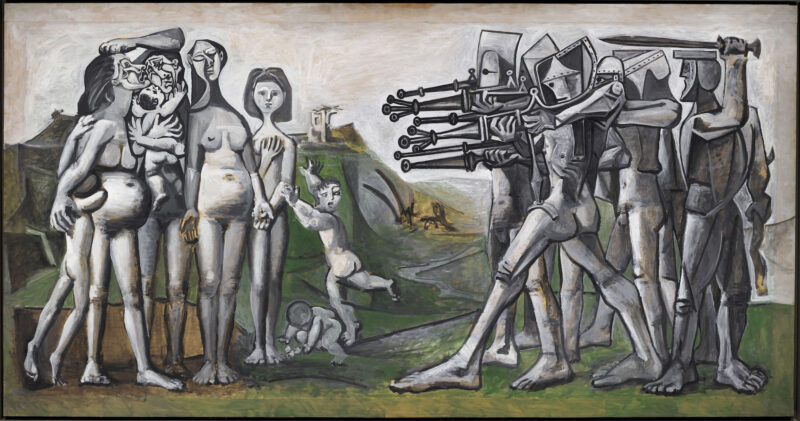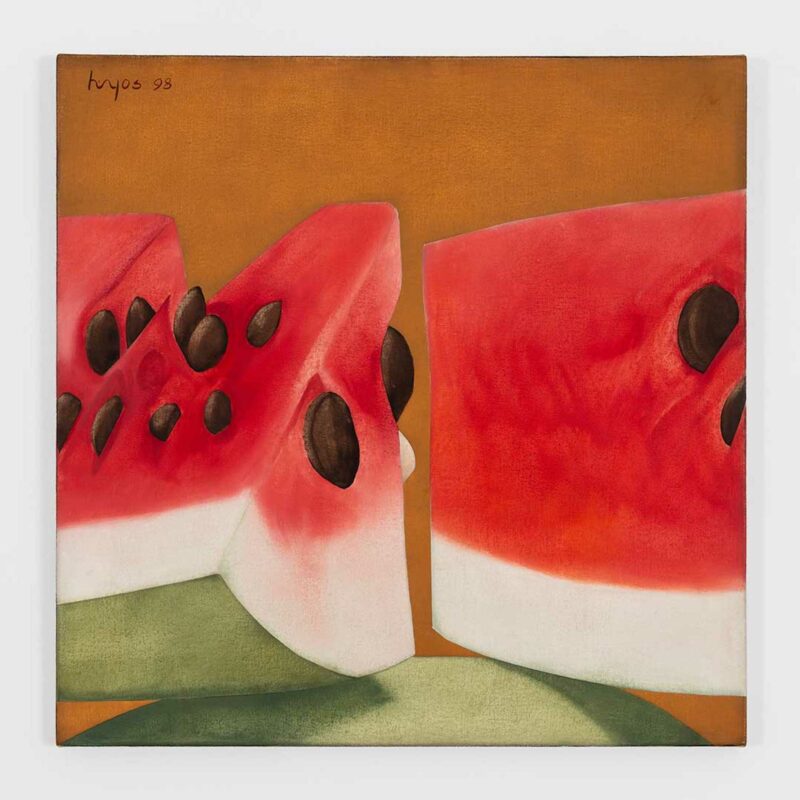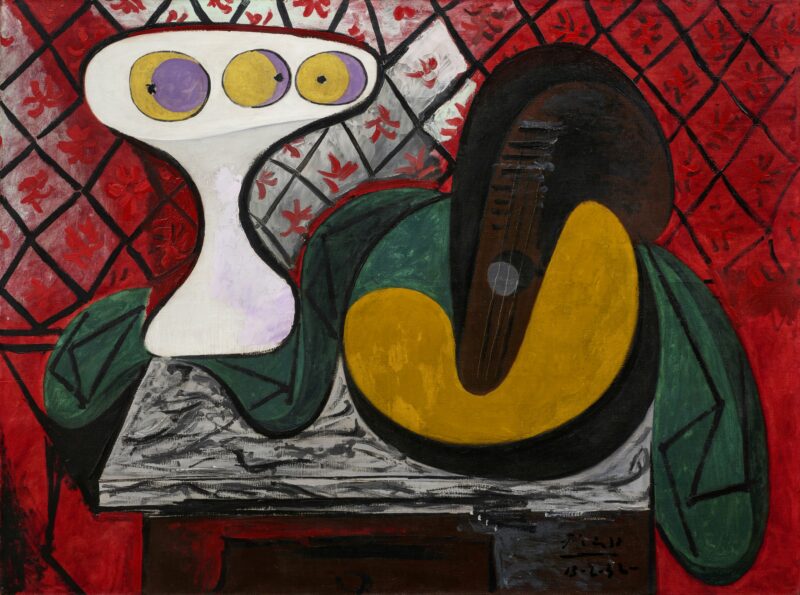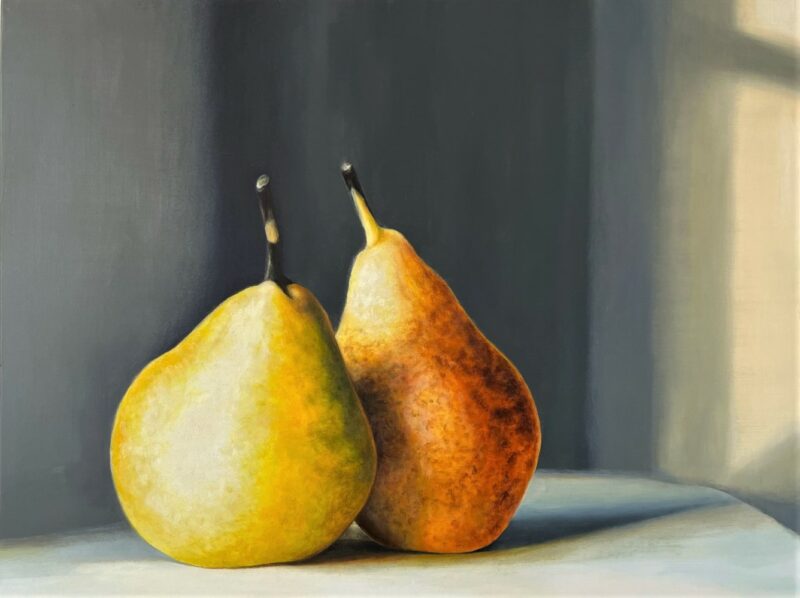Huxley-Parlour Gallery presents New Mythologies. Figurative Abstraction in Contemporary Painting. Through the compositions of seven artists, the exhibition explores the intertwining of abstraction and figuration.

Stephen Chambers, The Perfect Nude 1, 2010 © the artist, Courtesy Huxley-Parlour Gallery
The exhibition brings together seven artists coming from different backgrounds. They are: Stephen Chambers, John Copeland, Emma Fineman, Karishma D’Souza, Iris Schomaker, Ella Walker, and Eileen Cooper.
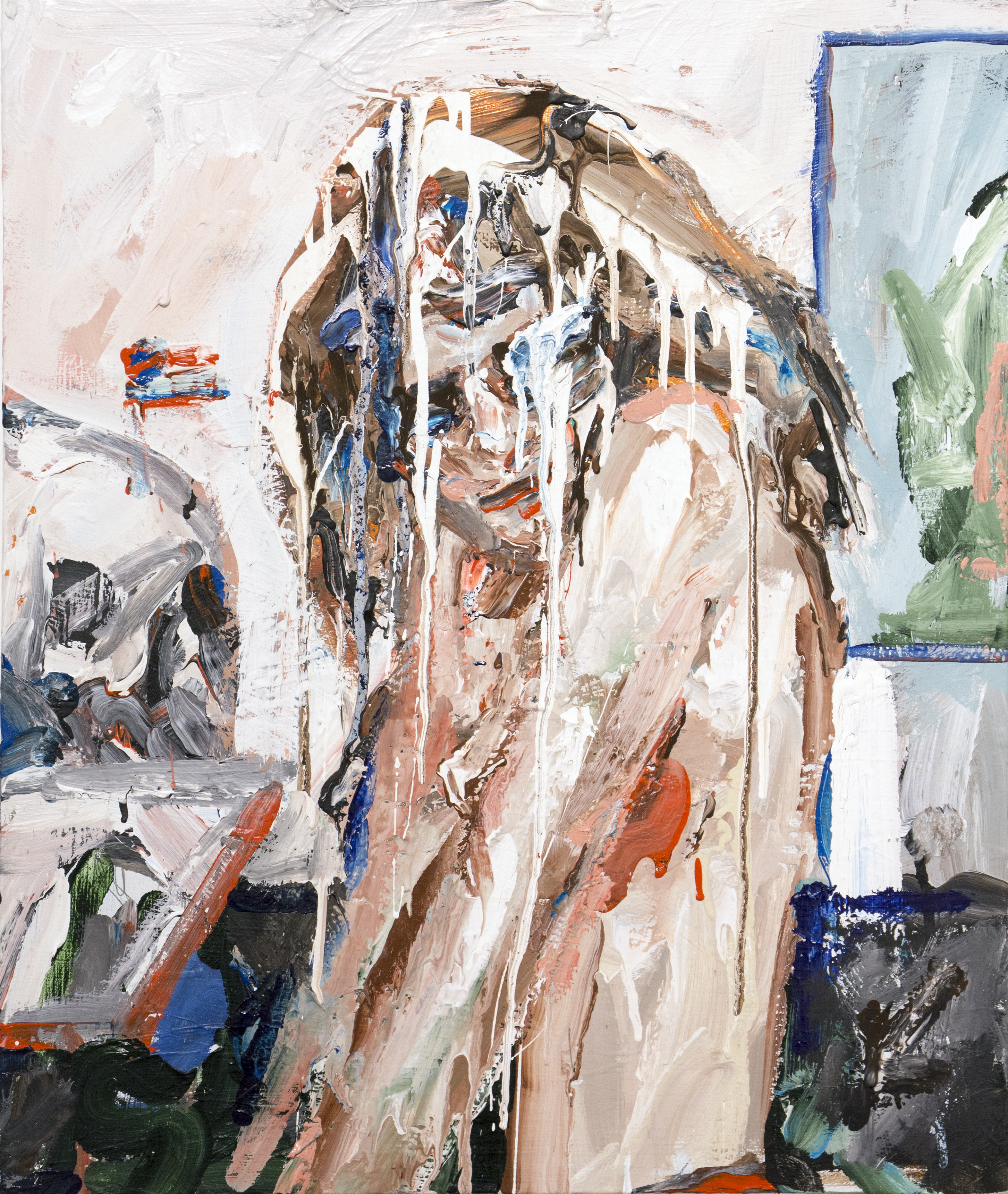
John Copeland, Good Morning, 2010 © the artist, Courtesy Huxley-Parlour Gallery
As you’ve probably guessed from the title, the show brings to light a body works conjoining figurative and abstract narratives. Sometimes, as in Copeland, the combination results in quite disturbing ‘figurations.’ The easily recognisable woman’s body and face, is then tainted by thick splashed of paint. The figure immediately turns into a not-so-familiar character.

Emma Fineman, My Hometown was Burning and All I Could Think of Was That Sun Bleached Wall I Pictured in A Dream About The Dominican Republic, 2017 © the artist, Courtesy Huxley-Parlour Gallery
The same can be said to Emma Fineman’s ‘Burning Hometown,’ where incinerated houses haunt an otherwise bright and peaceful seascape. Even though even in the ‘sun bleached walls of the Dominican Republic’ is impossible to miss the female figure pierced by a bloody shaft.

Iris Schomaker, Untitled, 2018 © the artist, Courtesy Huxley-Parlour Gallery
And what about Iris Schomaker’s faceless, solitary, upside-down figures? An uncanny strangenesses pierces through these tranquil scenes.
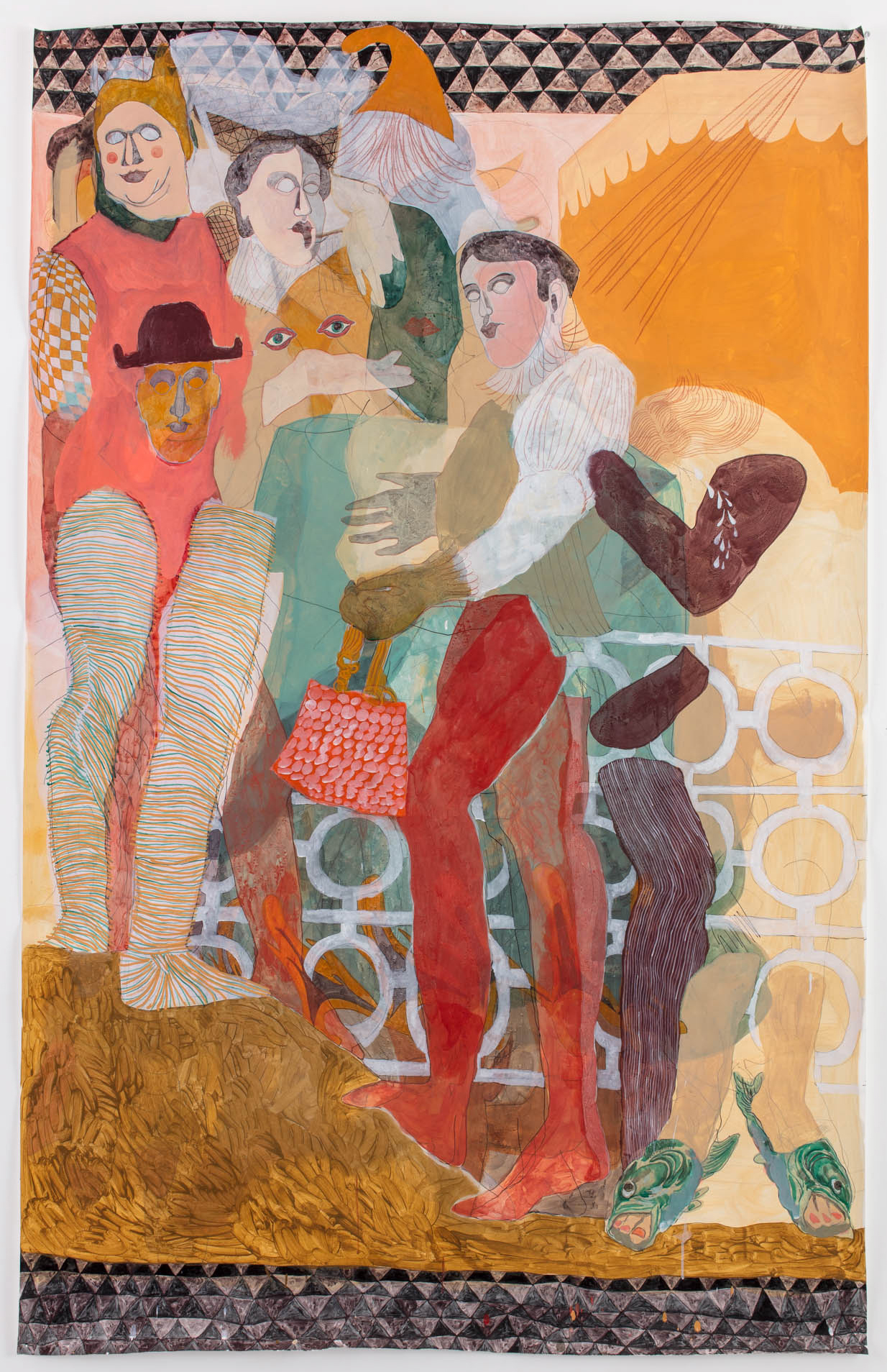
Ella Walker, The Cook the Thief his Wife & Her Lover, 2018 © the artist, Courtesy Huxley-Parlour Gallery
New Mythologies presents no simple ‘abstract or figurative’ dichotomy. Narratives, be they otherworldly, as in Ella Walker, or archiving social realities like those of Karishma D’Souza, are never so straightforward. The works on display reflect the complexities inherent to image making and representation. How can abstraction bring figuration to unexplored dimensions? How can it open up innovative possibilities?

Karishma D’Souza, Land Conversations, 2016 © the artist, Courtesy Huxley-Parlour Gallery and Xippas Gallery
Read my interview with four of the participant artists: Karishma D’Souza (KD), Iris Schomaker (IS), Ella Walker (EW), and Eileen Cooper (EC).
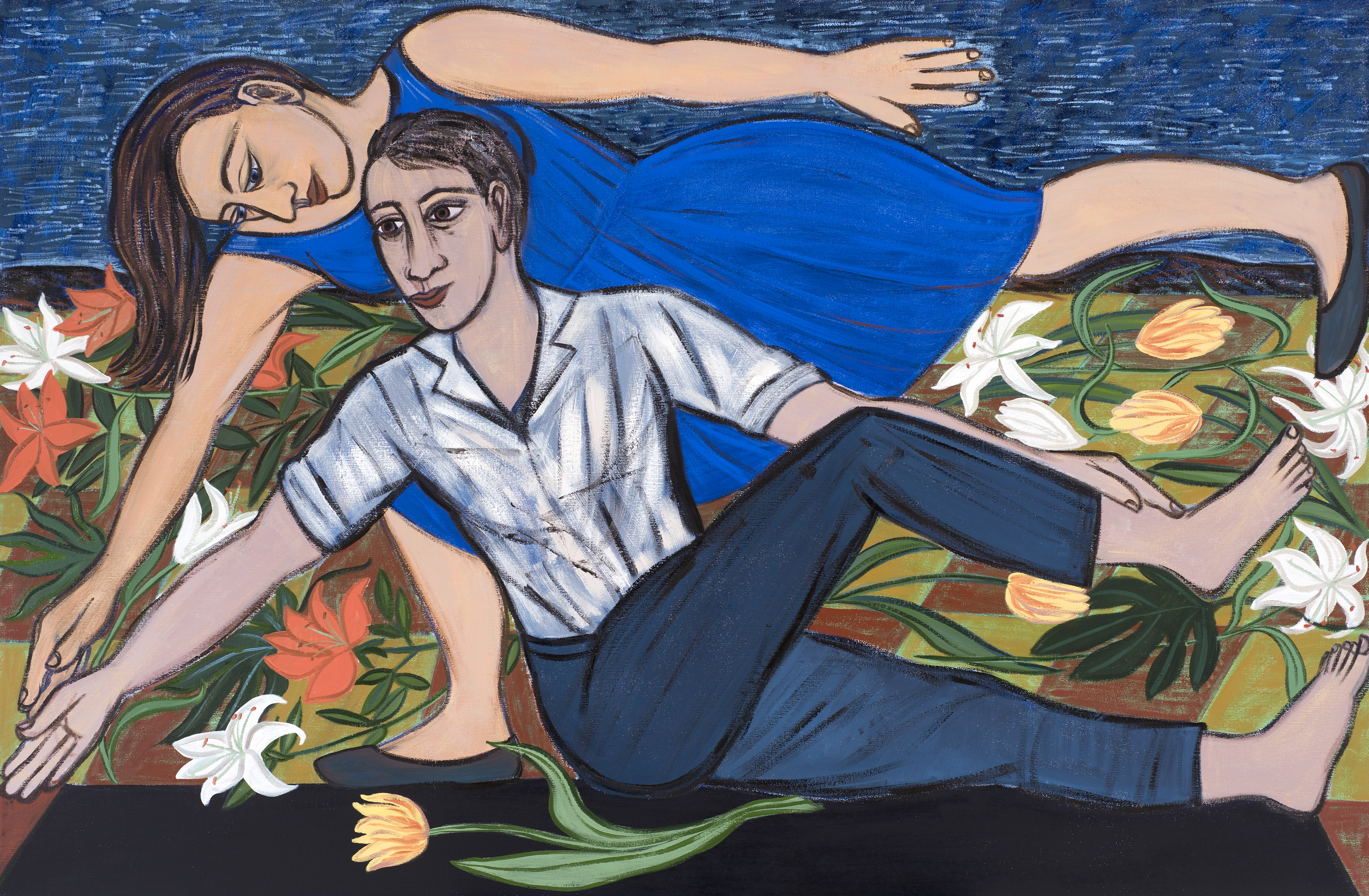
Eileen Cooper, Blue Duet, 2016 © the artist, Courtesy Huxley-Parlour Gallery
- How do you conceive of narrative within your practice?
KD: I build up images and the narrative through the process of painting. For instance, in a painting of a class at a free music school I began with a wish to document the atmosphere of the school at work, as well as paint portraits of the individual people working in this school, in this case the founder-teacher and one of the students. So a narrative is built of a desire to archive peoples work, in portraits of people as odes to them, their ideals and hopes. Light, colour and representations of objects are parts of the narrative. Other paintings work as calling forth what one wishes for— like tongue-in-cheek voodoo paintings. The images are, therefore, of realities which one hopes to help propagate the idea of; or to summon to a thriving state what’s currently of great value but under attack; or to archive present social realities in conversation with imagery from poetry and mythology.
IS: I see the works like film stills— they are showing a situation that is pinning down a whole story in one picture. But in that sense the idea of the very special moment is more important to me than the idea of the narrative.
EW: I maintain a deliberate and investigative approach to narrative; imagined characters are framed in scenes of otherworldly delights. A pointedly clothed jester grins at a seductress under the eyes of Santa Maria; whilst blood drips from the tip of a toe, and red socks glow from beneath a closed curtain; the work harks back to medieval history, image making and tradition.
EC: I often work in series, the narrative developing over several works. Characters and situations evolve as I’m painting, the stories revealing themselves, sometimes in quite a surprising way.
- What does ‘figurative abstraction’ mean to you? How would you describe the tension between abstraction and figuration in your work?
IS: My work is straight figurative. And still it needs the reduction of forms and the rhythmization through stark contrasts towards the abstract. The abstract is for me an possibility to increase the atmosphere of the work and come to the essence. This reduction creates more distance and as well it opens the work to the spectator like a personal projection screen.
EW: My understanding of figurative abstraction is that it derives from but does not imitate a real / recognizable subject. In my paintings figures and objects are ‘distilled’ — they occupy an imagined space.
EC: Abstraction is the formal structure that underpins imagery in my work. Figurative abstaction suggests to me of artists who work with figuration, but heavily influenced by modernism in their approach. In my case, this has meant not working directly from observation, relishing the freedoms modernism brought to artists.
- Why does the medium of paint appeal to you?
KD: In paint the creation of images is very direct to begin with; you think of something and you can immediately try out how it actually appears. Paint is fluid in the range of the imagery and materiality it allows, and because of it’s materiality imprints itself on everything said. It’s like a constant collaborative process of thought and the material of painting. I also enjoy the quick possibility of tonal variations in colour.
IS: I enjoy to work alone, to work with my hands, to be in working clothes and I want to see directly what I have done- the medium paint is perfect for me 🙂
EW: My work engages with traditional methods of painting often overlooked in contemporary art, including dry plaster fresco and the use of pigments and natural binders. In past exhibitions, I have worked on large scale mural projects. More recently I work on paper and canvas to achieve a similar quality. I combine mediums intuitively to create fluid and unique paints that result in playful textures and consistencies yet considered form.
EC: I think there is a primal connection with pigment and mark making and paint has a sensuality and physicality. Paint has great flexibility and permanence, one can work on any size with paint. On a practical level a painting studio can exist in many forms, making for accessibility and the democracy of painting.Painting studios can be as small as the kitchen table, or as large as the largest industrial space, a hotel room, a garden, bedroom, garden shed…
- How does the process of drawing influence your work?
KD: Drawing is a joyful action for me. Printmaking: serigraphy, lithography and etching, have also influenced how I paint; for instance in the use of line, flat areas of colour and defined shapes.
IS: As you can see in my works, the line in really important for me- there are the lines of the first sketches that shine through; there are leftover outlines of changed forms, and as well the hard-edged painted lines that I use as an architectural structure in the work. So drawing is essential.
EW: I find strength in the drawing element of my practice – there is always truth in drawn marks and I enjoy the journalistic nature of drawing– I don’t make studies for the paintings the drawing is in the work and this is important because it keeps a lively energy to the line. In the larger works under-drawing provides an intricate ground that structures the play of form and figures.
EC: Drawing is the basis of everything I produce, in whatever materials or media I use, whether its printmaking, painting, sculpture or ceramics. Drawing is how I understand the world as an artist, allowing me to be inventive and fluid, to record the world or have the freedom to use my imagination, or a mixture of many things.
- Picasso said that ‘there is no such thing as “There is no abstract art. You must always start with something. Afterward you can remove all traces of reality.”Would you agree with this statement? Can you tell us about your working process?
EW:Yes, I would agree that art originates from a desire to ‘imitate’ form. I think this quote relates to the idea of ‘distilled’ form, an art that reduces the classical or natural subject. I am influenced by classical forms motifs and subjects in my work.
EC: To some extent yes of course, everything is related to our experience of the world, our relationships, the way we are inspired by materials and process.
- Can you tell us about your working process?
KD: Understanding the working process to mean working through the content of a painting, this could begin with, for example, wishing to paint a series of portraits as odes to loved ones, or people from the community, combining that with imagery from poetry and literature, for instance the poetry of Rumi, Kabir and Lal Ded, and the short stories of Mahaswetadevi, to foreground ideas of humanism. The aesthetics largely relies on tonalities.
IS: Since I was young I am collecting ideas: photos, old drawings, cut outs from magazines, colors, forms, surfaces, music, sounds, headlines, descriptions of atmospheres, themes, books … I then put permanently in new order these findings. From this I start todraw and some of these drawing I use for developing a painting. I do a sketch of the motif in coal on a heavy paper- and then I start to work with color and forms. Often I use stencils or painted tape to get an idea of what has to happen next. During the process of working the motif is changing a lot. Probably most time I spent to understand what I better avoid to do. This process takes 4 – 6 month – and usually I work parallel on 5-6 large works and around 15 smaller ones.
EW: The potential in images is the most fascinating thing about the process of painting- there is so much change and possibility. My works are extremely layered, relishing in direct and often fantastical content the resulting compositions are tightly framed, shallow spaces that suggest a constant interplay between the realms of drawing, painting and design. I work a lot from reproductions, and keep an archive of these in my studio so I can reference them regularly.
EC: In making a painting, I work quickly at first, often making a loose and deliberately unresolved drawing with charcoal or paint on a blank canvas. I work very intensively on a new piece for maybe a day or two, then often leave it and start something fresh. This way of working might continue untill I have several pieces on the go. Then the problem of finishing works without overworking begins!
New Mythologies. Figurative Abstraction in Contemporary Painting. 12 April – 4 May 2019
Huxley-Parlour, 3-5 Swallow Street, London, W1B 4DE

